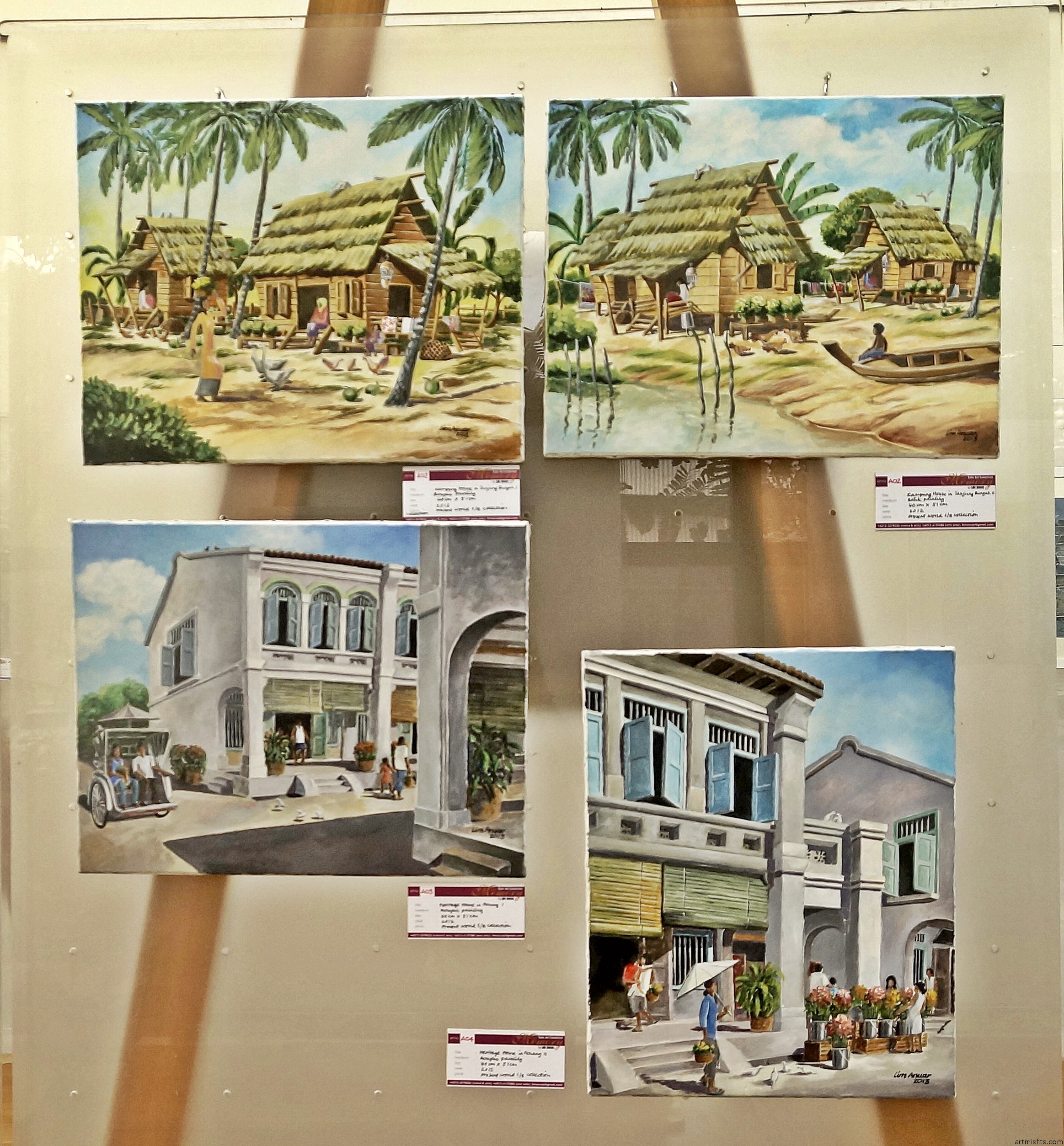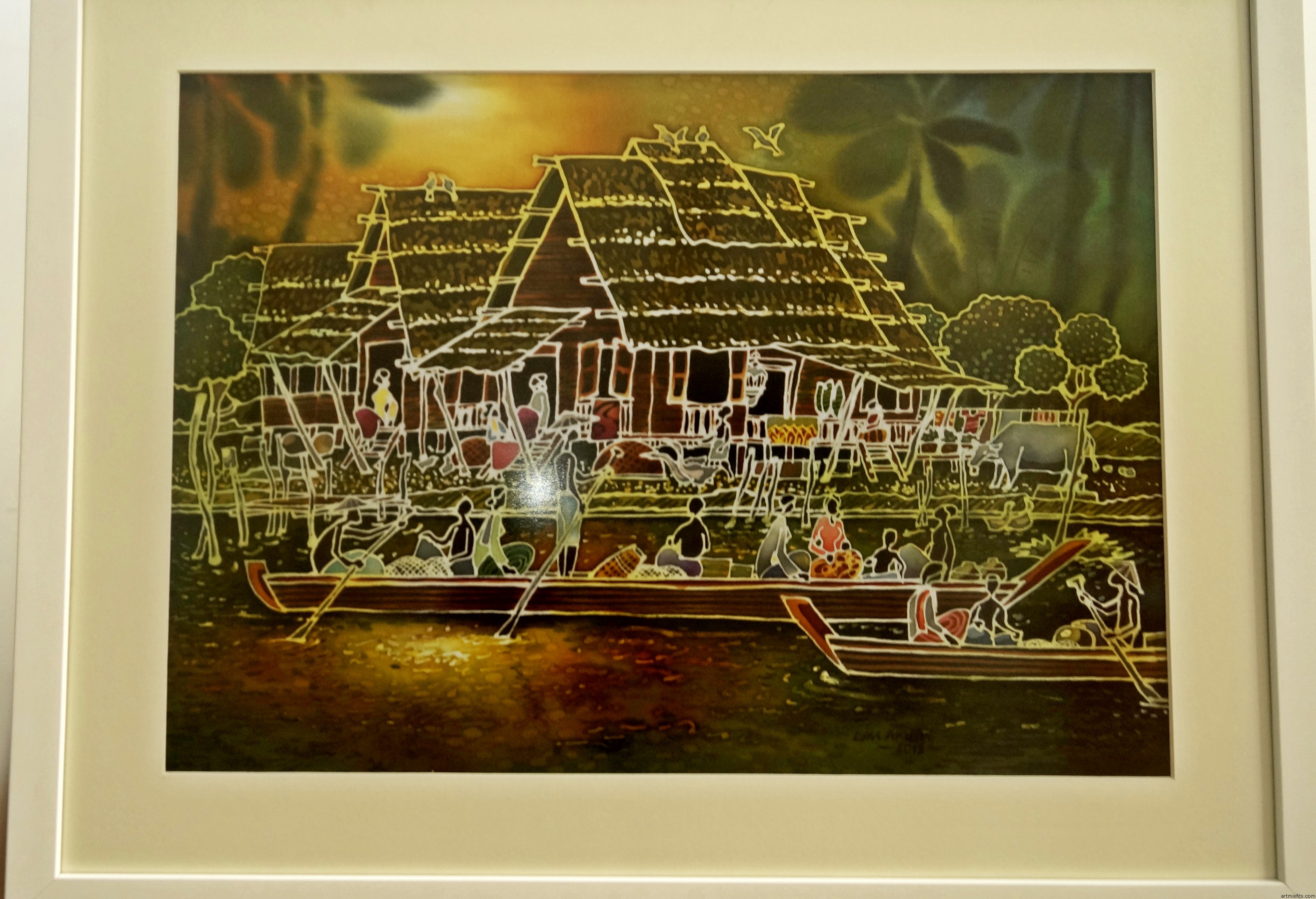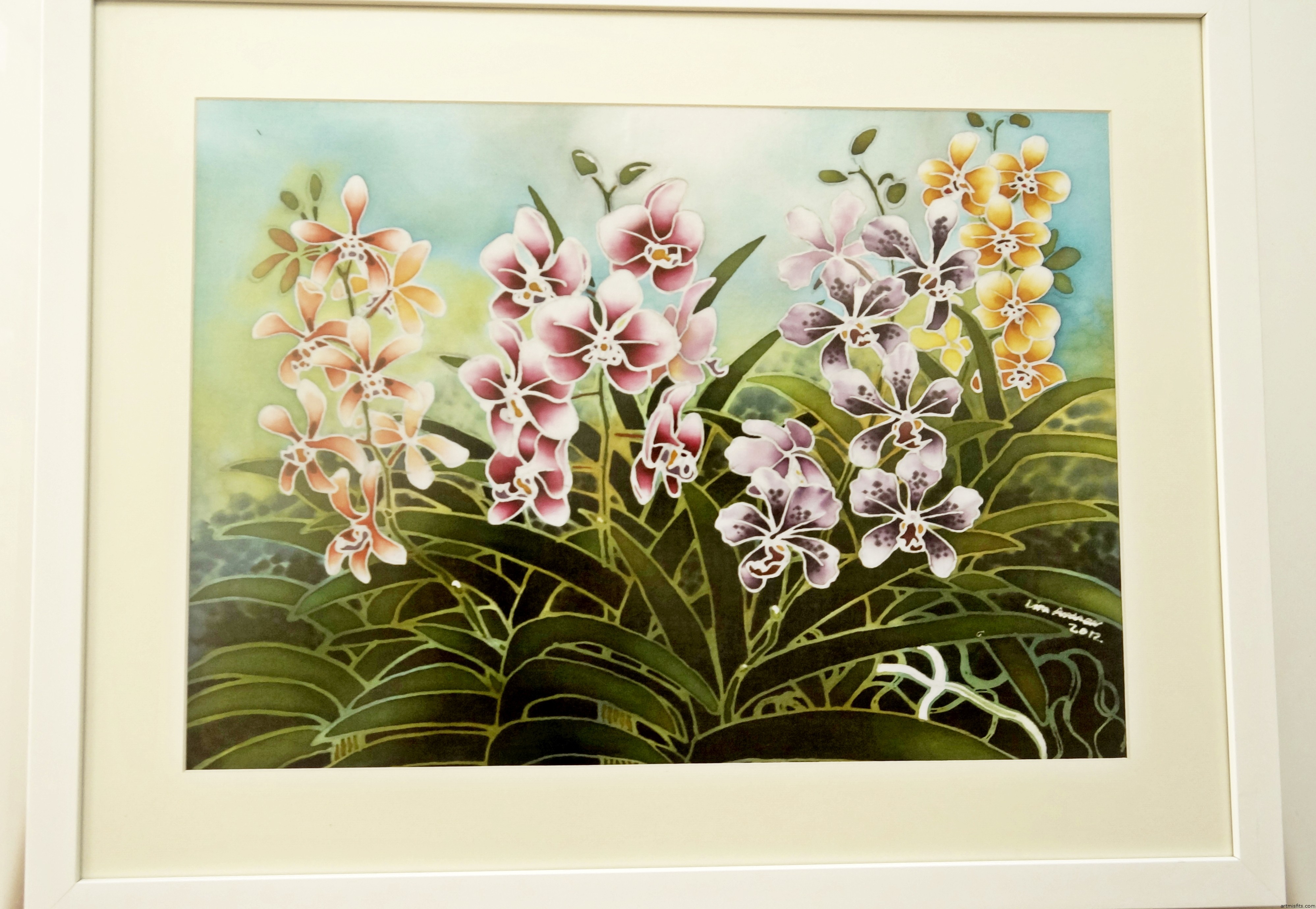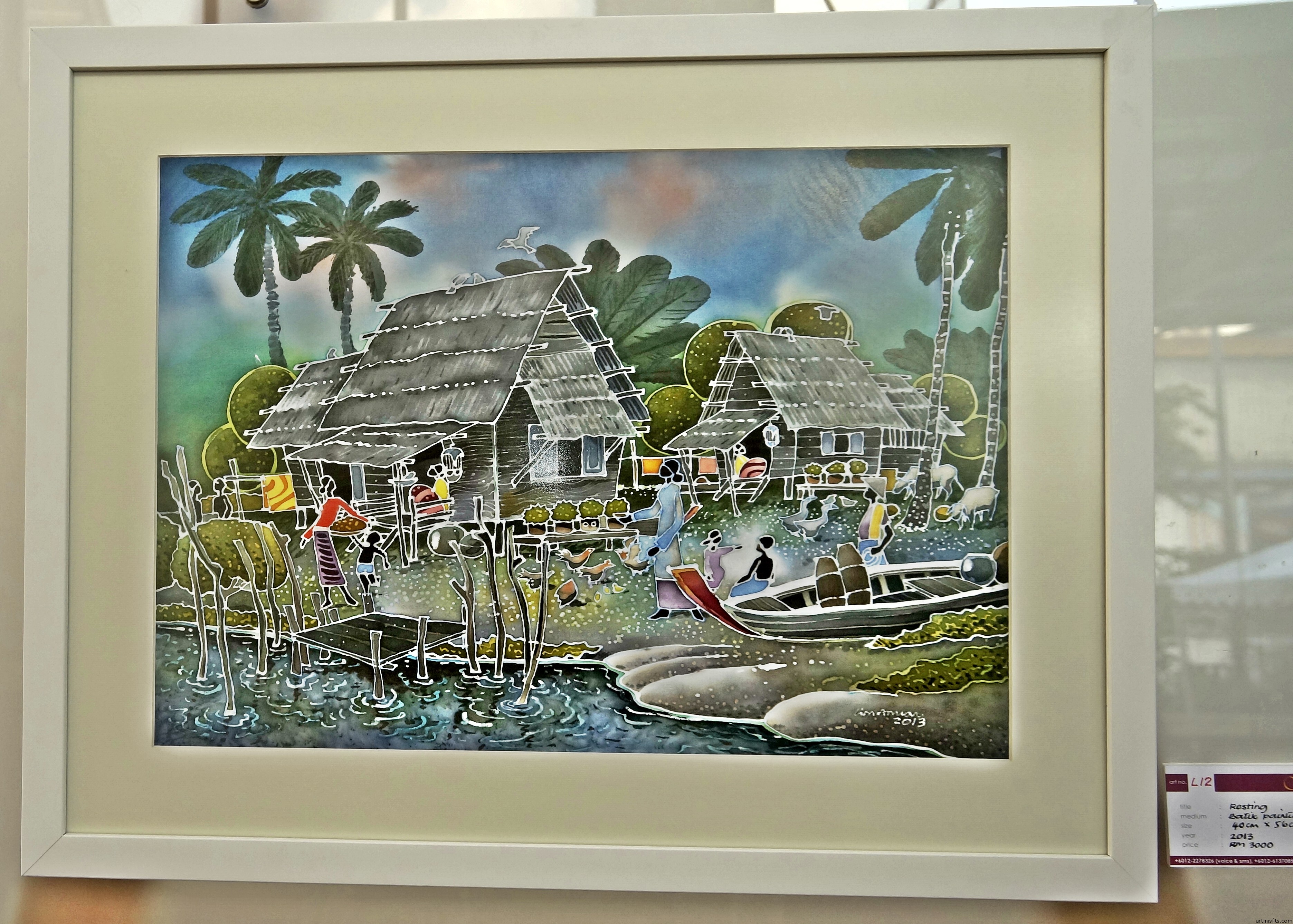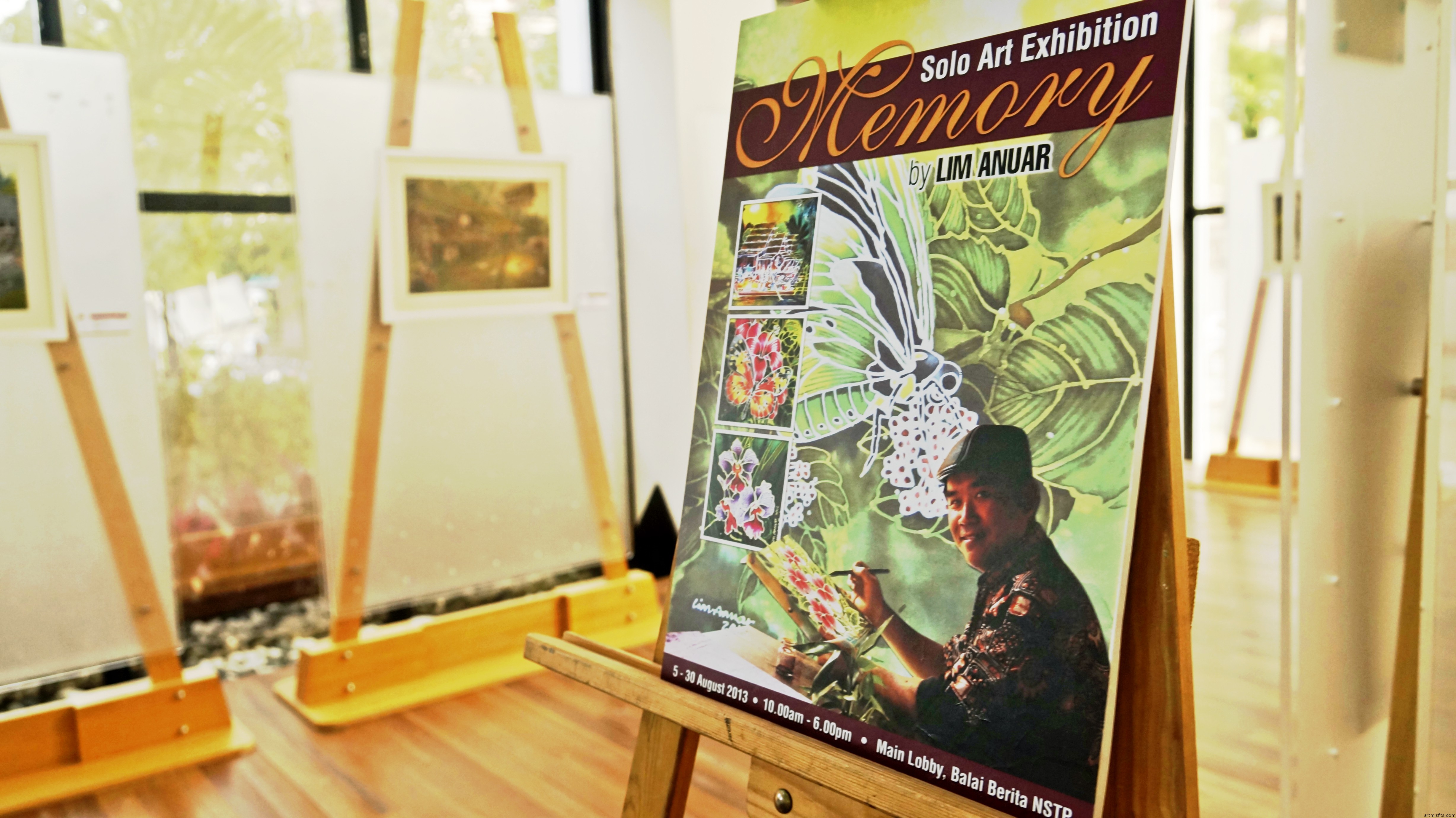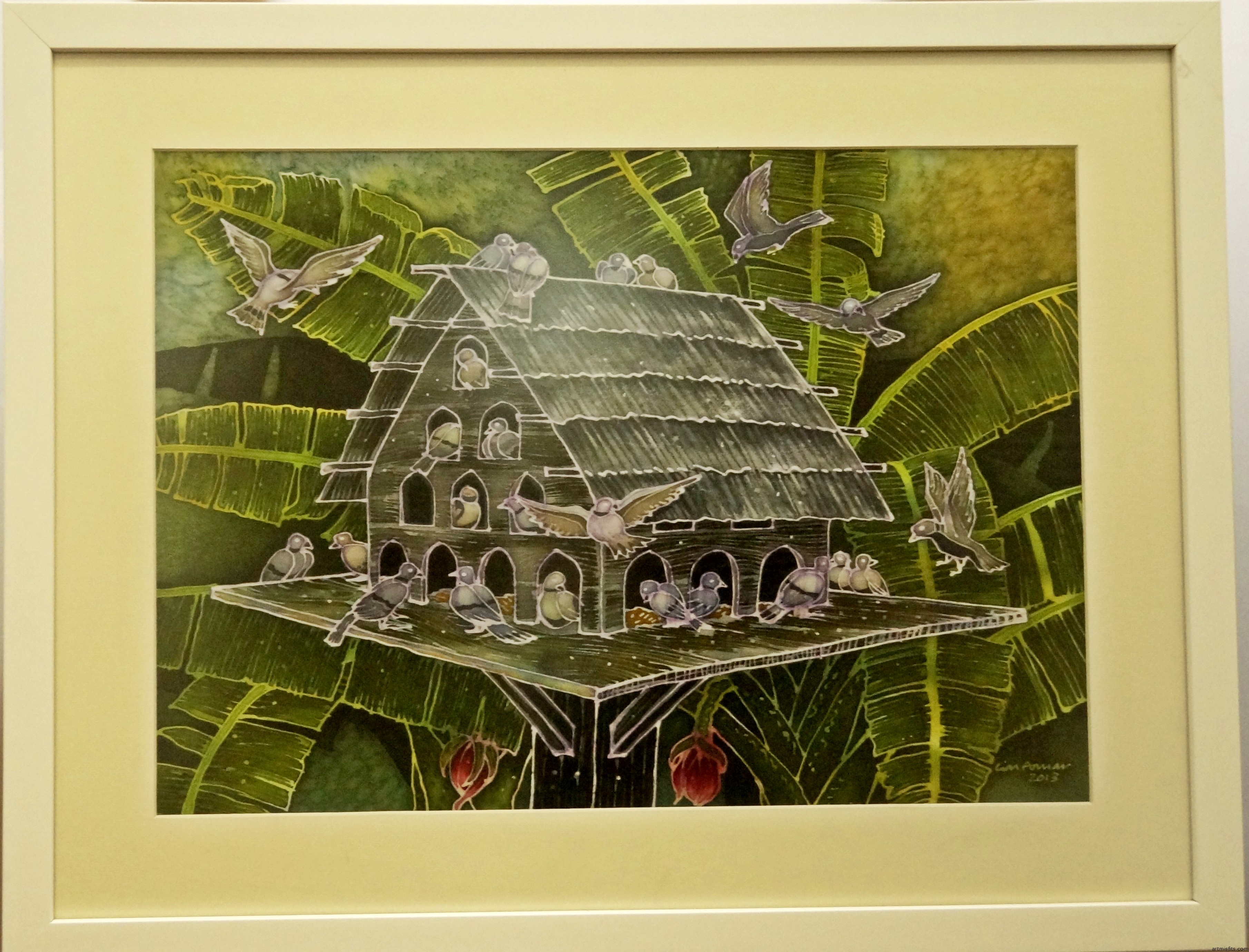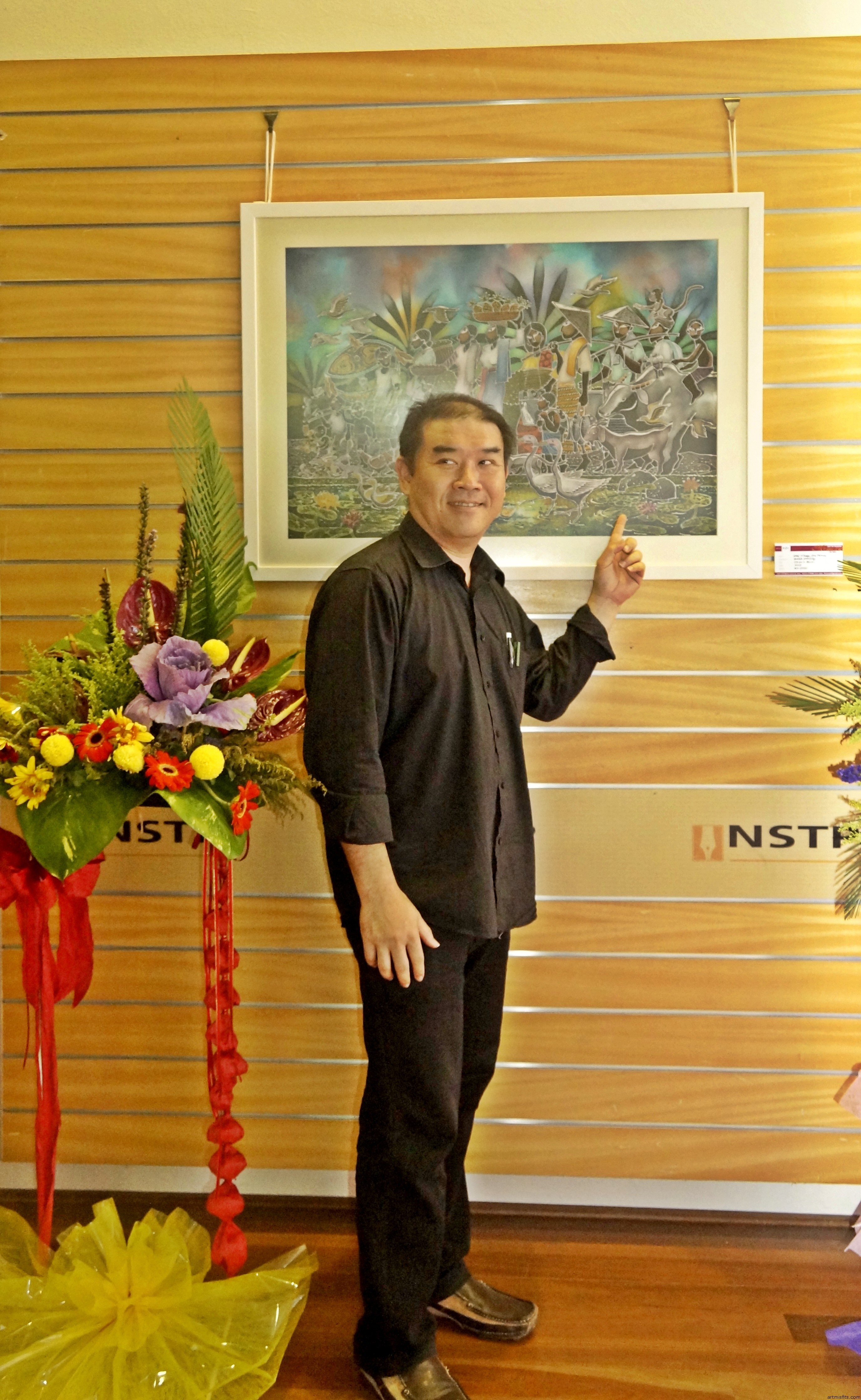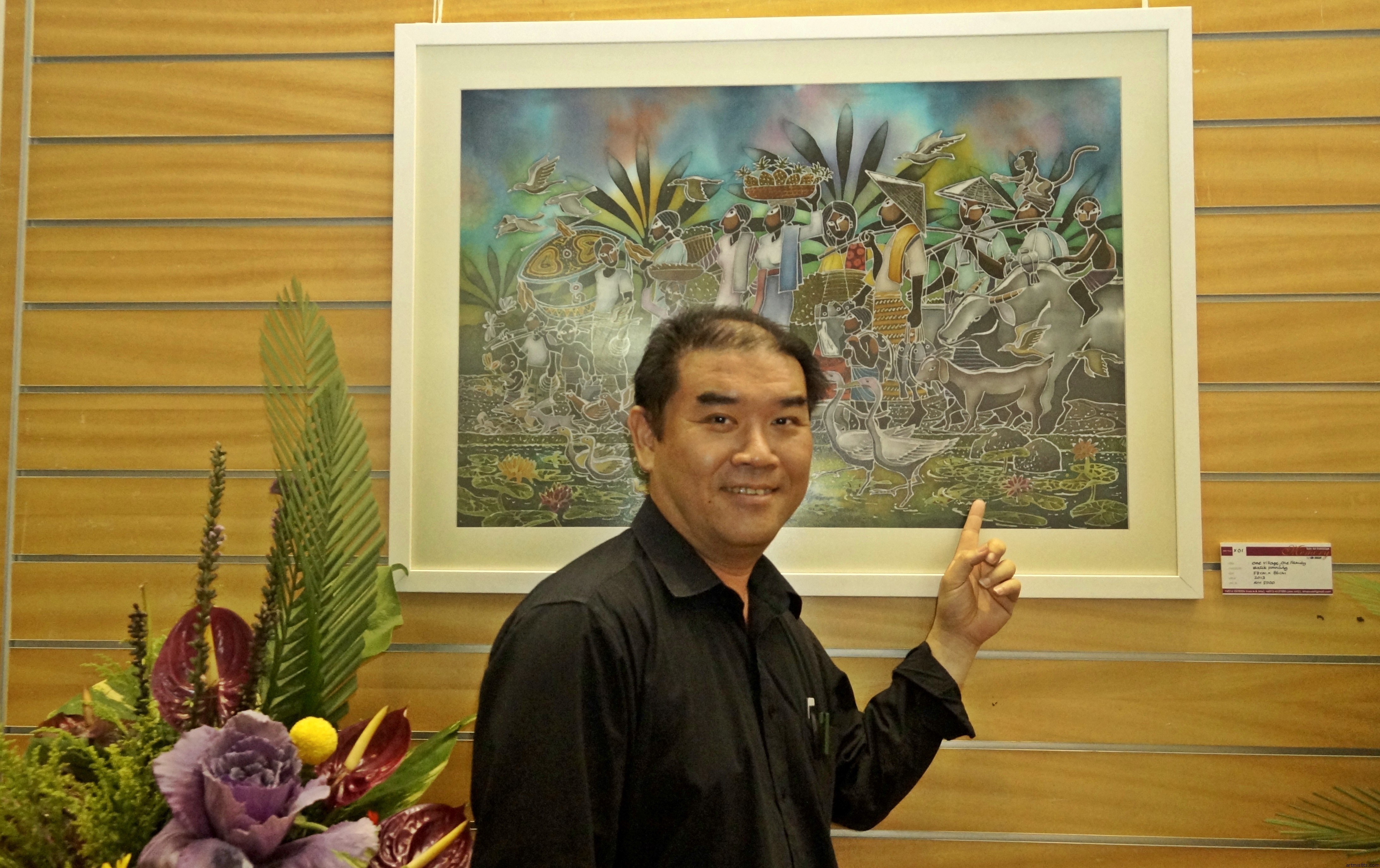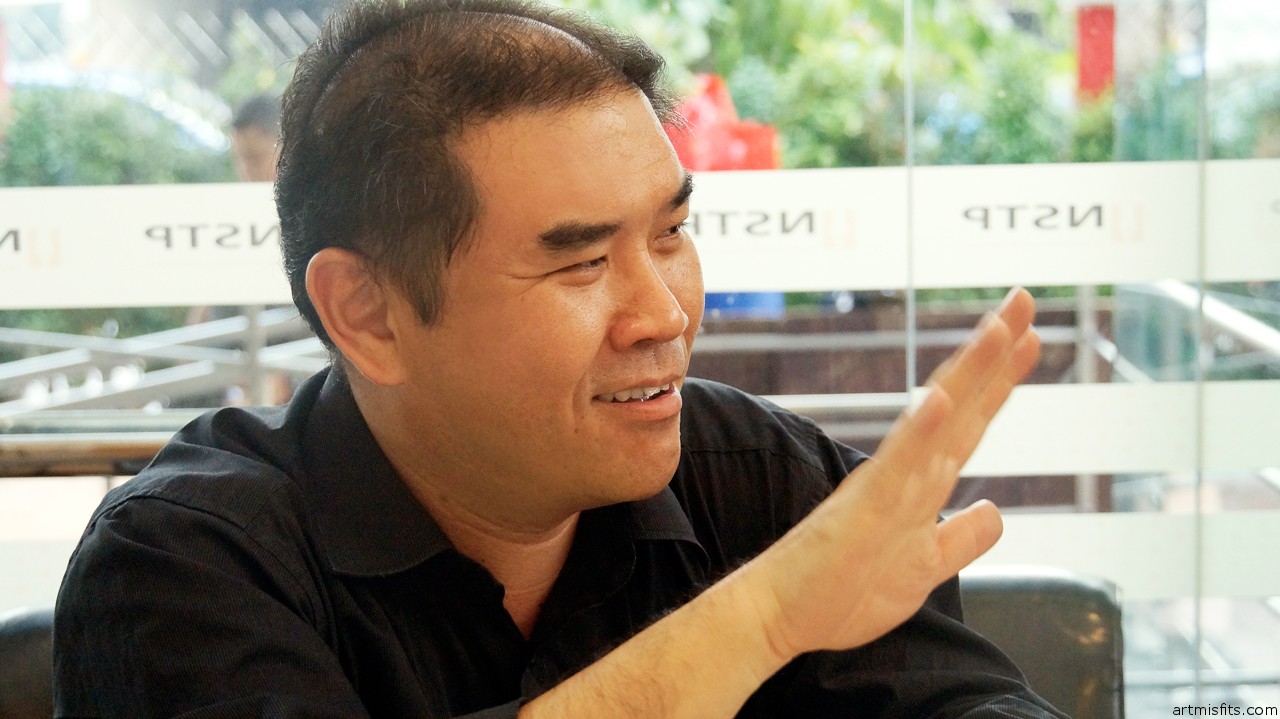An undeniably talented artist, Lim Anuar is a man with incredible strength of character. He has overcome much in his life; the ‘slings and arrows of outrageous fortune’ have been levelled at him many a time and yet he has not tired of living.
At first approach, his composed and serene bearing can mislead one to assume that he is an unassuming, ordinary man; but, once introduced, his wittiness and droll humour will have one in stitches within minutes. This is all the more impressive when you consider that Lim Anuar was born deaf and has never heard nor spoken a word in his life.
Lim Anuar is one of those people who do not let anything stop him, he has had every opportunity to rest on his laurels and live a simple, comfortable life; but, his path is not that of those who will pass into obscurity. Lim Anuar is a man for the ages, his art, his passion for life and the memory of his kind, friendly nature will be remembered for a long time to come.
The Day We Met
With the help of a translator, Lim Anuar asked how Art Misfits came to hear about him.
We answered that one of our regular Google searches for inspiring, interesting and local artists had returned a link to the News Strait Times article about his first solo exhibition at the News Strait Times, Balai Berita.
It is not a usual occurrence that an artist who has freshly arrived on the exhibition circuit gets to have a solo exhibition; and while Lim Anuar has worked in the arts and graphic design field for a number of years, this is the first time he has devoted himself entirely to his own art work.
And what a way to make an entrance! There are so few artists who can work with the batik style of painting that you could count them on your fingers. Also, Lim Anuars scrapbooks show that he is skilled at painting with a number of mediums, so naturally we asked:
What made you choose the batik style?
I could paint using various mediums however I chose batik style as batik represents Malaysia culture. Furthermore, there are not many batik artists around. Most of the artists prefer other mediums as batik techniques is complex and require higher level of skill and time consuming.
What do you think of today’s trends in art? (Modern art, art installations)
Contemporary art that are taking place now sees various styles of painting. There are more abstract arts and artists are bold in using various mediums and tools to create their artwork.
In your opinion, what is the most difficult part of the creating process?
The challenging part in creating process is coming up with new ideas and exploring new method in creating it differently from previous work.
Can you tell us about that one defining moment when you knew you wanted to be an artist?
My interest in the arts developed when I was about 10 years old. It started when I was a student in the Federation School for the Deaf in Penang. I remember an occasion where I saw my friend’s dragon and phoenix painting which really inspired me. I felt that I could do better than my friend and so I picked up drawing. I started with simple Kung Fu comics.
What do find most enjoyable about being an artist/the creative process?
As cliché it may sound, painting and drawing are a form of communication for me. I express myself through drawing and painting on the canvas. My painting allows the audience who view it to enter into my world.
Has your work required any lifestyle changes?
So far there are no changes in my lifestyle. The fact that I am working on my own (art) pushes me to work harder.
Has the reality of being an artist been the same as you expected? How is it the same? How is it different?
I do not have any expectation or perceive how an artist should be. However at times I was disheartened when I was overlooked by people due to my disability though my skills are better than some of the artists.
What is the biggest hurdle you have had to overcome?
The biggest hurdle will be communication. Unable to hear and speak put me in a very disadvantageous position in life. I am unable to voice my opinion, share my thoughts, exchange ideas and receive information instantly. What hearing people learned and knowledge received now, I only get to know about it a few months later.
These are the challenges Deaf people encounter. Another hurdle I have is handling the art business on my own. I learn hands on and from mistakes made. I need to juggle the business side of it and producing artwork at the same time.
What did you want to be when you grew up?
When I was young, I do not have any ambition. I took on many different jobs. My late mother encouraged me to take up job as a mechanic thinking that only handy work was suitable for Deaf. There was no one to guide me and there weren’t any exposure back then.
How has your life been different than what you’d imagined?
There isn’t much difference in my life now. Being deaf and unable to speak is a double setback. Many opportunities were lost and missed.
It seems that your childhood in Penang really stayed with you, could you share an anecdote or memory of that time?
I was sent to the Federation School for the Deaf in Penang at the tender age of 3 years old. Away from home and growing up alone was very difficult. I could not describe in words the amount of pain and hardships I went through during my formative years in Penang. There were days I had to go by with an empty stomach and drinking cold water from the tap. I had to endure the bullying and taunts from the older boys as well.
Despite all the shortcomings and challenges, I treasure those experiences that helped me to appreciate life and motivated me to work harder. Of course there are some pleasant memories during my younger days.
I remembered the time I played with other kids in the fishing village. I used to explore the villages that I walked pass every day. I observed their daily life and learn(ed) their cultures.
Who has been the biggest influence on your life? What lessons did that person teach you?
One of the people who had influenced and had great impact in my life was a Deaf trainer whom I met in a leadership and motivation workshop in Singapore. Through him, I acquired leadership skills and opened up my eyes to view the world differently.
What do you do when you are not painting?
Previously, I was actively involved in many associations and organisations for the Deaf. Since becoming a fulltime artist last year, I have to manage everything on my own. There isn’t any free time at hand then and now.
[/col][col size=”1/2″ ]You have recently undertaken your masters studies, has formal education always been very important to you? Why do you want to be a lecturer in addition to being an artist?
I was an ignorant child. There wasn’t anyone around me to guide me or tell me the importance of education. As a Deaf child, I wasn’t aware of the tough and challenging world that awaits me. As I grew older and started working, I learned and realised the importance of education.
There was constantly a thirst for knowledge and information. I earned my degree while I was working in Limkokwing University. Without a sign interpreter, I had to struggle and put in double effort to understand the lectures besides coping with my day job. I had to admit that many times at great difficulties, I thought of giving up.
I’m very grateful that UM (University Malaya) accepted me to pursue my Masters’ degree in Visual Art under the Cultural Center. The lecturers are very open and willing to accept me as the first Deaf student in the center. There are many successful Deaf people in many parts of the world. There are Deaf people who were elected as member of the parliament, a Deaf representative in the White House, successful Deaf actors, entrepreneurs, lawyers and many more.
As I grew older and were exposed to the world though participation in seminars, workshops and competitions internationally, I came to realise that Deaf people are capable and can contribute to society. With that awareness and bout of spirit, I am determined to make (the) best use of my skills and talent to make changes to the world. Thus I decided to pursue my master degree to improve myself.
With the knowledge gathered and vast experiences in life, I want to contribute not only to the Deaf community but for the society at large. I hope that my achievements will be a source of hope and motivation for other Deaf to pursue their dreams and achieve success in their lives.
What do you think of the opportunities available for Malaysian artists in Malaysia/the world?
Of late, you can see the burgeoning of young talented artists in our country. Many of these young people who identify themselves as artist(s) use art as a form of expression and to make bold statements. As society becomes more affluent and willing to invest in art and pursue their interest, there are more opportunities for artists to market their products. There are more platforms and with the help of technology and social media, artists can now easily promote their work worldwide without boundaries.
What words of wisdom would you want to pass on to aspiring artists?
Being a true fine art artist is not merely making artwork by splashing some colours on a canvas. A good artist should have the basic knowledge and skills in art to create a good masterpiece.
Creativity alone without a solid foundation of skills and knowledge in art will not make a person a great artist. For those who are serious in pursuing a career as a fine art artist, s/he is advised to acquire a proper training in art, whether though a formal training in art school or training under an art master.
What legacy do you want to leave for future generations?
I hope to leave this world with a foundation that helps the poor and abandoned elderly people. I want to be remembered as a great artist and be source of inspiration for many generations to come.
What are you proudest of in your life?
One of the proudest and memorable moments was winning a batik painting competition (Piala Sri Iman) in Terengganu. I was the only disabled person among all the participants. Winning the first prize in that competition proved that my skill and ability was as good as other normal people, if not better than them.
This shows that being Deaf does not make me any lesser than normal people.
Would you say you have achieved all you personal ambitions? Please enumerate.
I am grateful to God for his blessings showered on me. I’m also thankful to many wonderful and kind-hearted people who have helped me along the way. They accepted me and willing to give me the opportunity to prove my capabilities.
I’ve just started my career as a full time artist. There are so many things I have yet to achieve as an artist. The journey ahead will be a long winding one.
Lim Anuar: Visionary
It is hard not to fall under the spell of Lim Anuars charm. He is a man who has suffered, not just for his art but to gain a respectable foothold for himself in society.
Where others would have given up, he persevered: when many would have rested, he pushed for more: when he realised that the world is tilted against him because of his disability, he chose to pay no heed and continue on the path he has chosen for himself.
Despite the many hardships he has encountered and the difficulties he now faces since he became a full time artist while pursuing his Masters’ degree, he always has a smile ready on his face. Lim Anuar is an amiable, good-natured man and one of the finest artists to come out of Asia.
Yet, he is not done. He has many more projects on his horizon. One of these is a center he hopes to open for the Deaf and Hearing alike. Lim Anuar intends for the center to be a place where he can bring together both Deaf and Hearing peoples so they can interact and learn from and about each other, with the intention of breaking down the barriers that keep the two apart.
Lim Anuar feels that once he creates a bridge where the two can meet, then all distinctions will fall away; ‘Art does not distinguish between Deaf and Hearing, and neither will this centre’.
Lim Anaur worked closely with Tan Sri Dato’ Sri Dr Lim Kok Wing for many years, reporting directly to him. Thus, he was inspired to form his center in a similar manner to how Limkokwing institute began.
The number of Deaf children and parents with Deaf children who approach him is what convinced him to go ahead with the idea for opening the center.
After The Interview
We knew very soon after we met Lim Anuar that we were not in the presence of an ordinary man.
Lim Anuar made us laugh, strengthened our resolve to strive harder for our dreams and made us want more out of our lives.
Even if he was not a gifted artist, Lim Anuar would have left his mark on this world, someone as hard-working, as diligent and with the sheer amount of talent he possesses could never remain unknown.
LOOK OUT FOR LIM ANUAR’S SECOND SOLO EXHIBITION!
December 2013.
Island Gallery, No. 6, Phuah Hin Leong Road, 10050 Georgetown, Penang, Malaysia.
For more information, please contact at +6016-437 6687
and islandgallery2010@gmail.com

